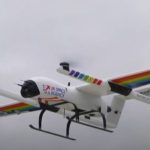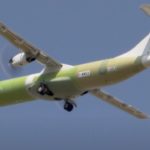NASA’s OSIRIS-REx spacecraft has used its robotic arm to collect dust and pebbles from the surface of an asteroid for delivery to Earth in 2023.
In a first for the agency, NASA’s Origins, Spectral Interpretation, Resource Identification, Security, Regolith Explorer (OSIRIS-Rex) unfurled its arm to touch the well-preserved, ancient asteroid, known as Bennu. Bennu is currently more than 200 million miles from Earth. The asteroid offers scientists a window into the early solar system as it was first taking shape billions of years ago, flinging ingredients that could have helped seed life on Earth.
If yesterday’s (October 20) sample collection event, known as “Touch-And-Go” (TAG), provided enough of a sample, mission teams will command the spacecraft to begin stowing the primordial cargo to begin its journey back to Earth in March 2021. If the samples are found to be insufficient, they will prepare for another attempt in January.
“First for NASA”
NASA Administrator Jim Bridenstine said: “This amazing first for NASA demonstrates how an incredible team from across the country came together and persevered through incredible challenges to expand the boundaries of knowledge. Our industry, academic, and international partners have made it possible to hold a piece of the most ancient solar system in our hands.”
OSIRIS-REx fired its thrusters to nudge itself out of orbit around Bennu yesterday afternoon. It extended the shoulder, then elbow, then wrist of its 11 foot sampling arm, known as the Touch-And-Go Sample Acquisition Mechanism (TAGSAM), and transited across Bennu while descending about a half-mile toward the surface. After a four-hour descent, at an altitude of approximately 410 feet, the spacecraft executed the “Checkpoint” burn, the first of two manoeuvrers to allow it to precisely target the sample collection site, known as “Nightingale.”
Few clear spots on boulder-covered asteroid
The spacecraft then fired its thrusters for the second “Matchpoint” burn to slow its descent and match the asteroid’s rotation at the time of contact. It then continued a treacherous, 11-minute coast past a boulder the size of a two-story building, nicknamed “Mount Doom,” to touch down in a clear spot in a crater on Bennu’s northern hemisphere. The site, the size of a small car park, is one of the few relatively clear spots on the boulder-covered asteroid.
Thomas Zurbuchen, associate administrator for NASA’s Science Mission Directorate at the agency’s headquarters in Washington said: “This was an incredible feat – and today we’ve advanced both science and engineering and our prospects for future missions to study these mysterious ancient storytellers of the solar system. A piece of primordial rock that has witnessed our solar system’s entire history may now be ready to come home for generations of scientific discovery, and we can’t wait to see what comes next.”
Spacecraft telemetry data indicates the TAG event was executed as expected but it will take around a week for the OSIRIS-REx team to confirm how much sample the spacecraft collected. Real-time data indicates the TAGSAM successfully contacted the surface and fired a burst of nitrogen gas. The gas stirred up dust and pebbles on Bennu’s surface, some of which should have been captured in the TAGSAM sample collection head. OSIRIS-REx engineers confirmed that shortly after the spacecraft made contact with the surface, it fired its thrusters and safely backed away from Bennu.
Sample size is similar to a chocolate bar
The spacecraft carried out TAG autonomously, with pre-programmed instructions from engineers on Earth. Now, the OSIRIS-REx team will begin to assess whether the spacecraft grabbed any material, and, if so, how much; the goal is at least 60 grams, which is roughly equivalent to a full-size chocolate bar.
OSIRIS-REx engineers and scientists will use several techniques to identify and measure the sample remotely including comparing images of the Nightingale site before and after TAG to see how much surface material moved in response to the gas.
The team will try to determine the amount of sample collected. One method involves taking pictures of the TAGSAM head with a camera known as SamCam, which is devoted to documenting the sample-collection process and determining whether dust and rocks made it into the collector head.
To store the sample, engineers will command the robotic arm to place the sample collector head into the Sample Return Capsule (SRC), located in the body of the spacecraft. The sample arm will then retract to the side of the spacecraft for the final time, the SRC will close, and the spacecraft will prepare for its departure from Bennu in March 2021 — the next time Bennu will be properly aligned with Earth for the most fuel-efficient return flight.
OSIRIS-REx launched from Cape Canaveral Air Force Station in September 2016. It arrived at Bennu in December 2018, when it began orbiting the asteroid for the first time. The spacecraft is scheduled to return to Earth in September 2023, when it will parachute the SRC into Utah’s west desert.

